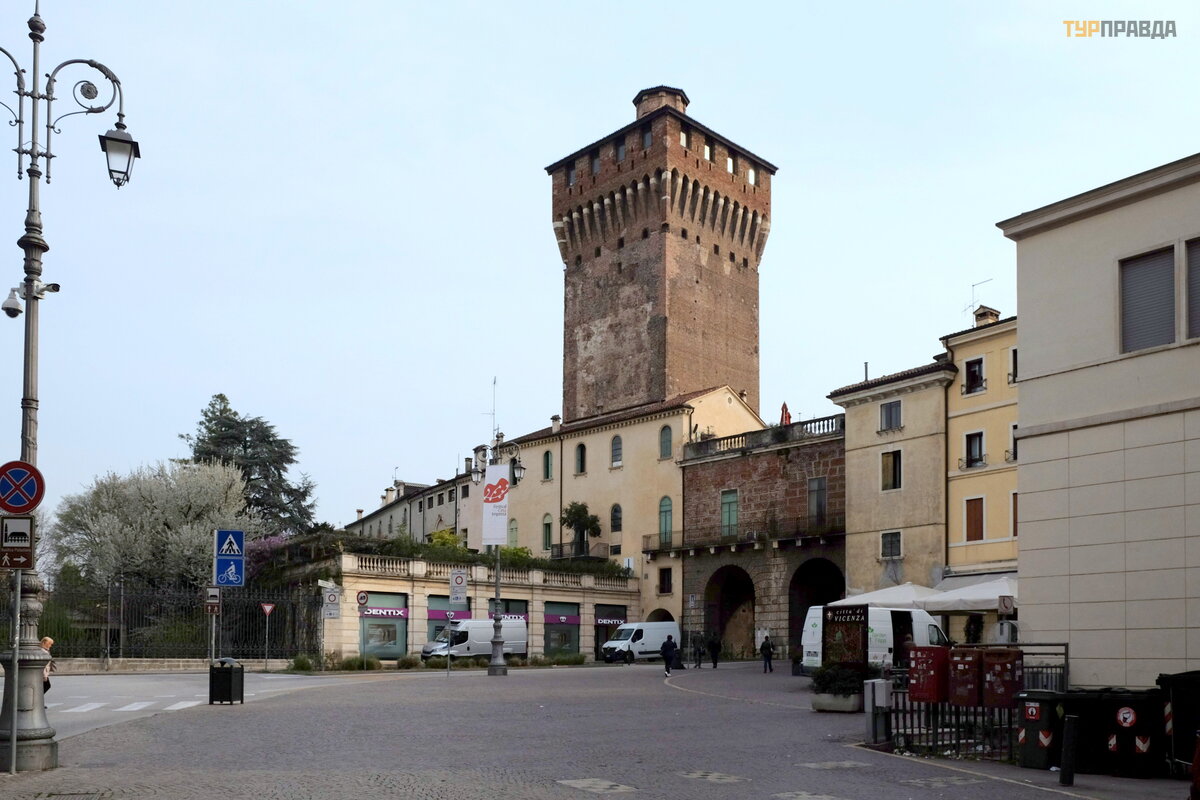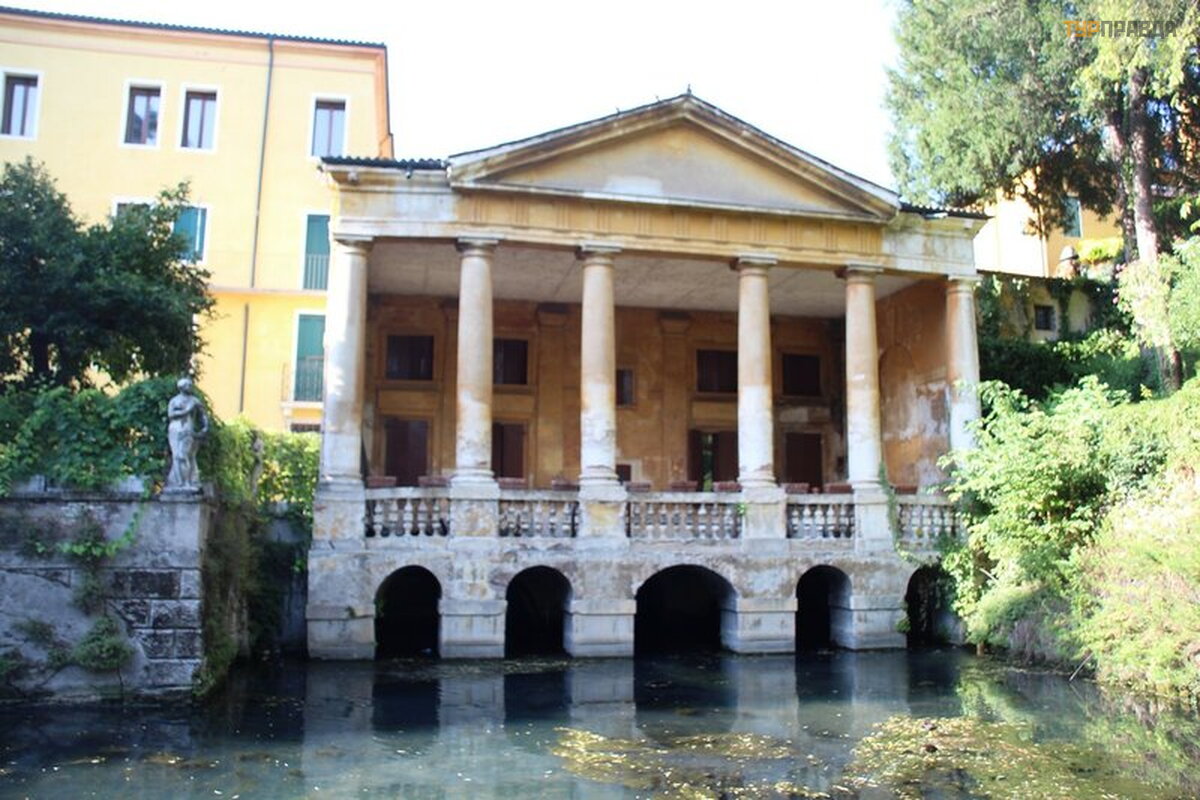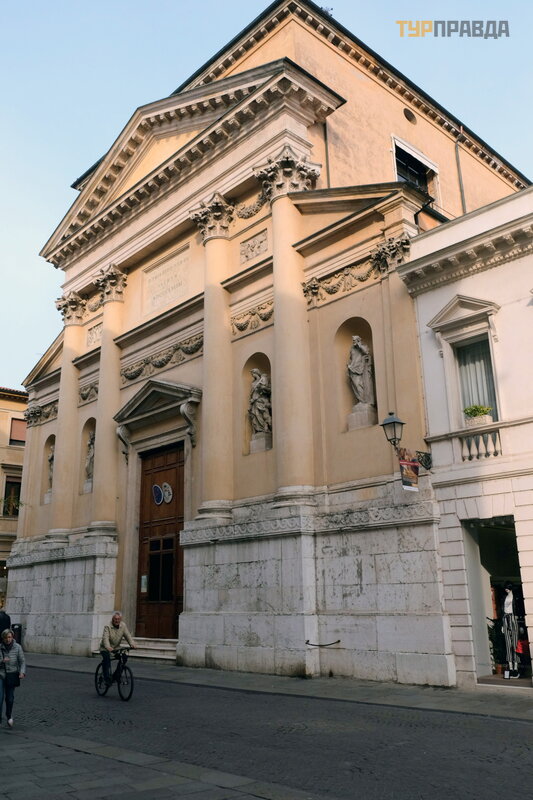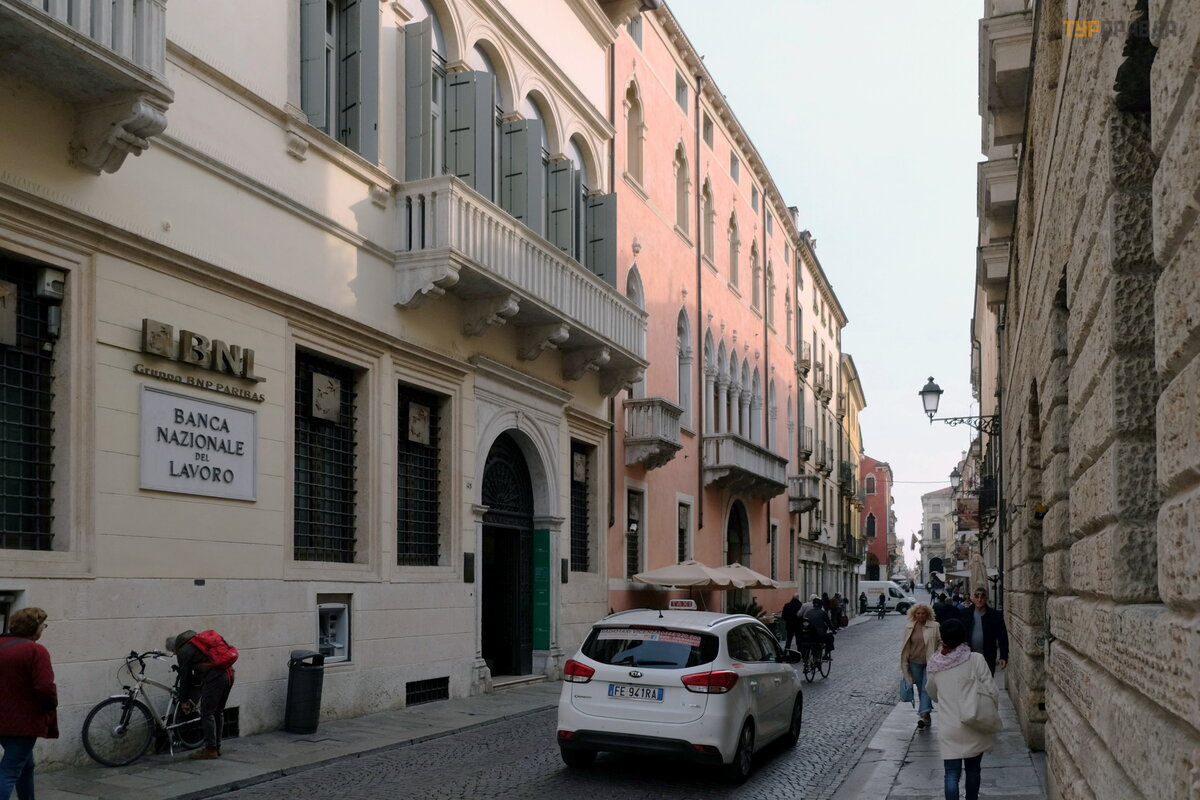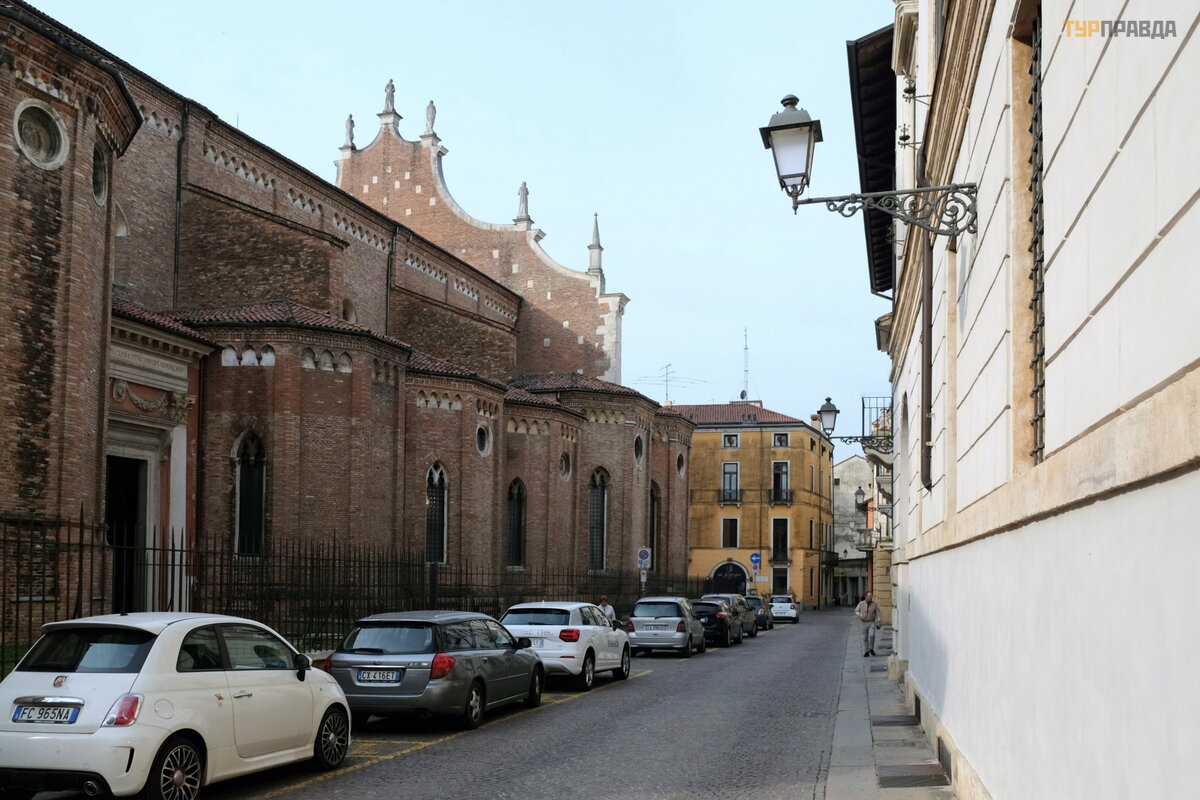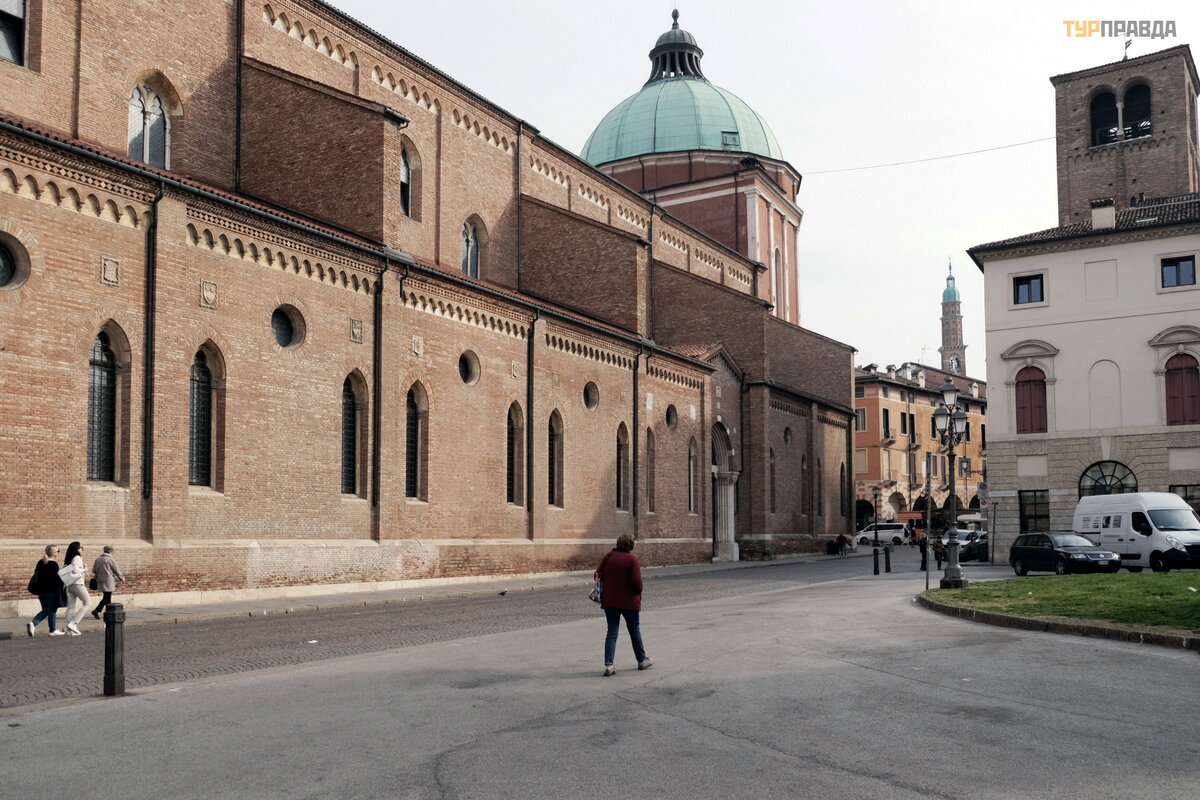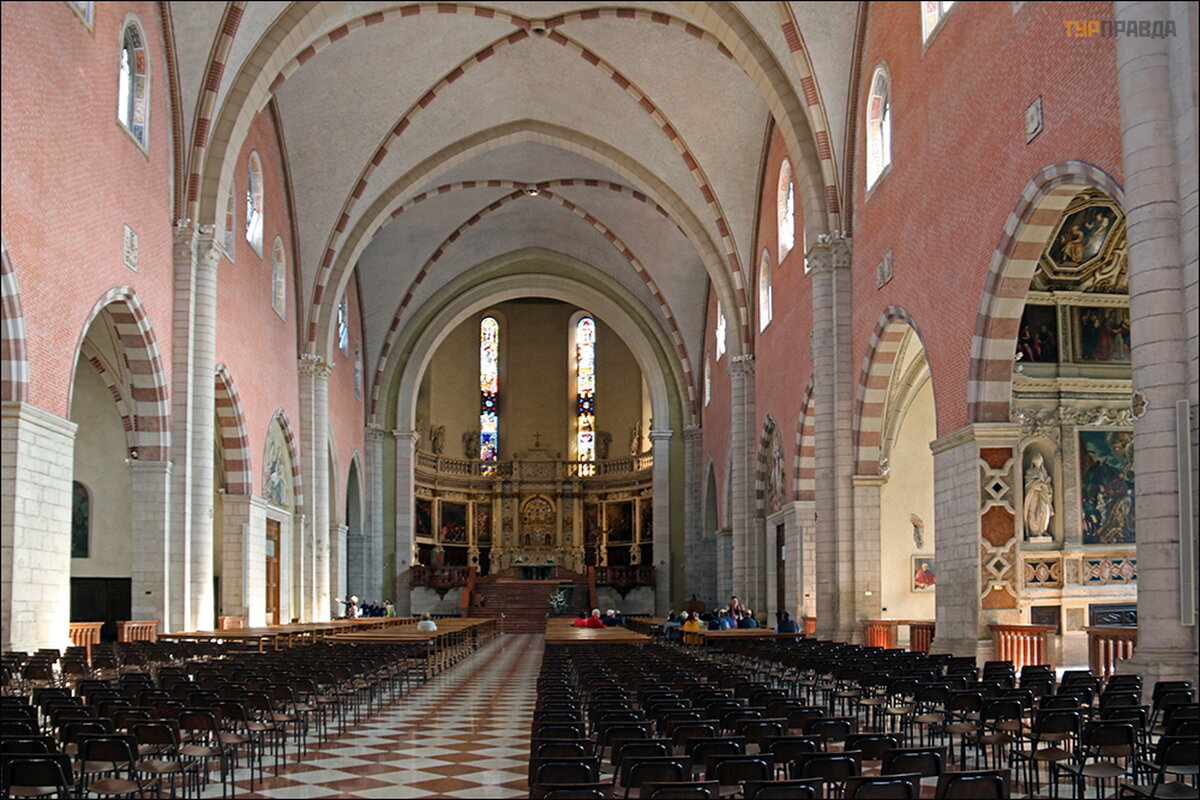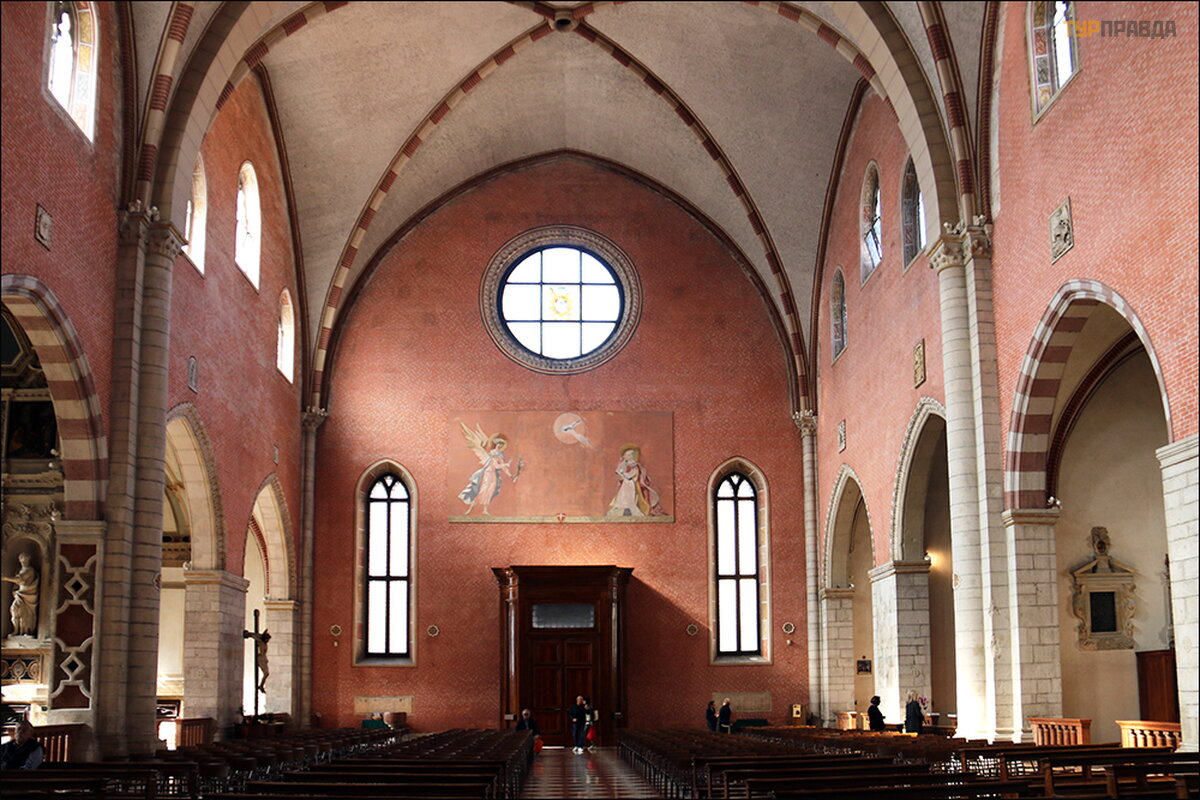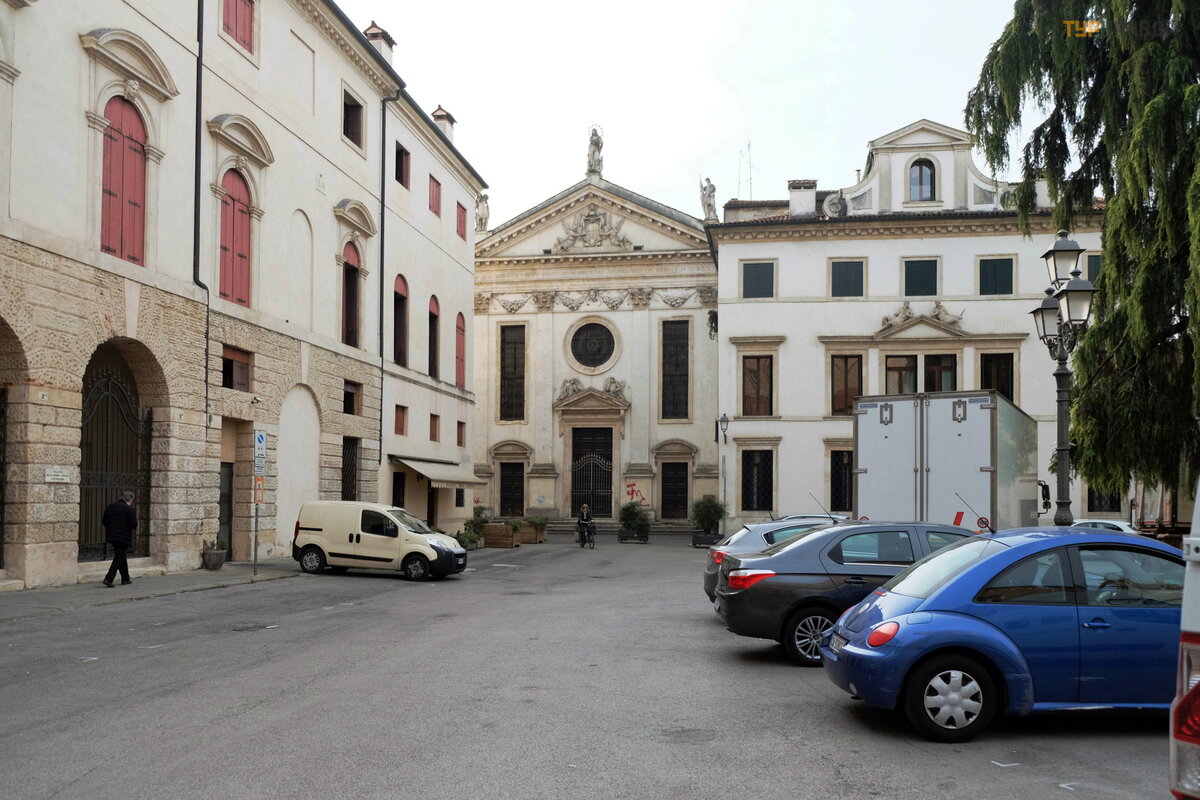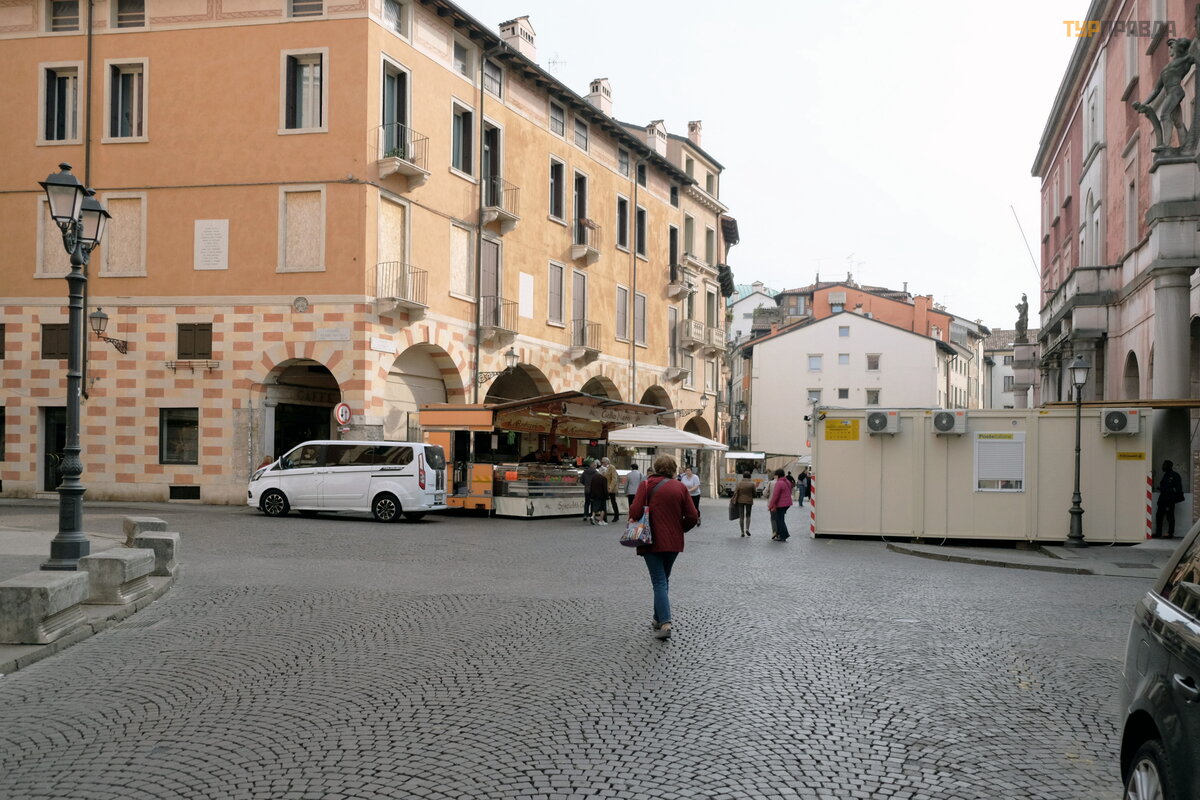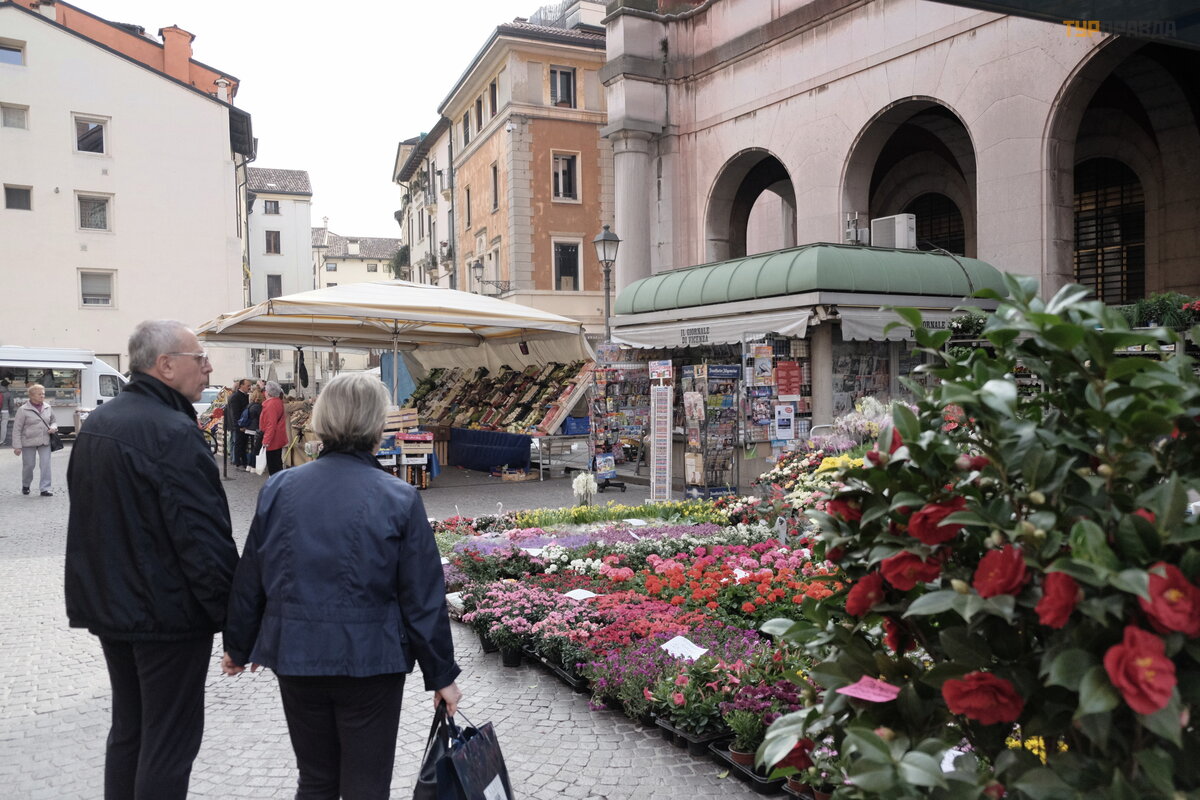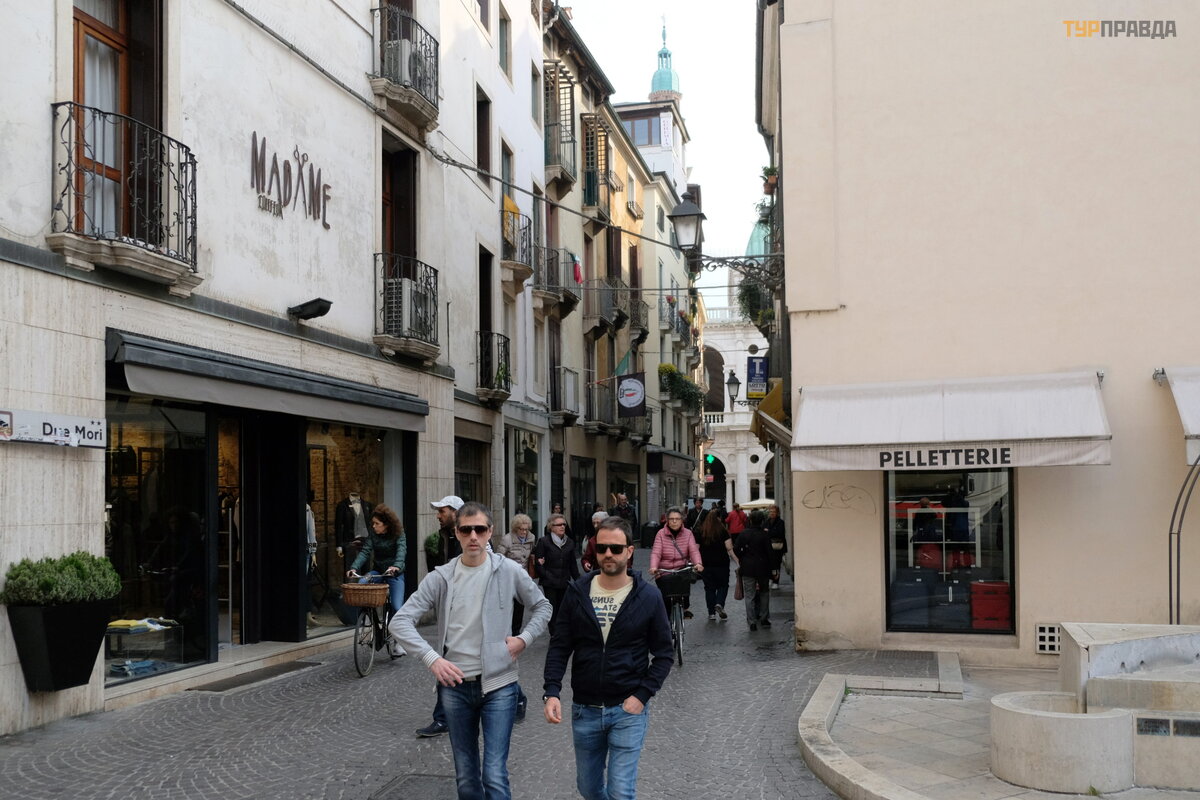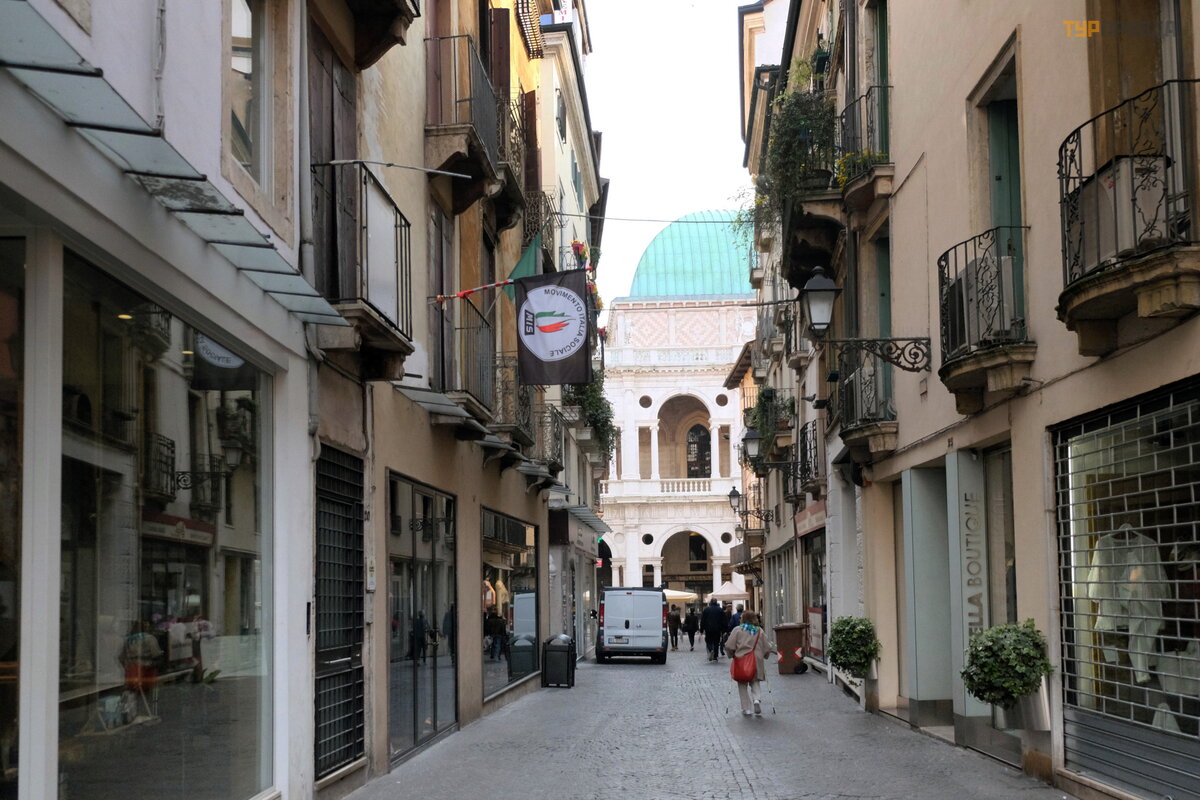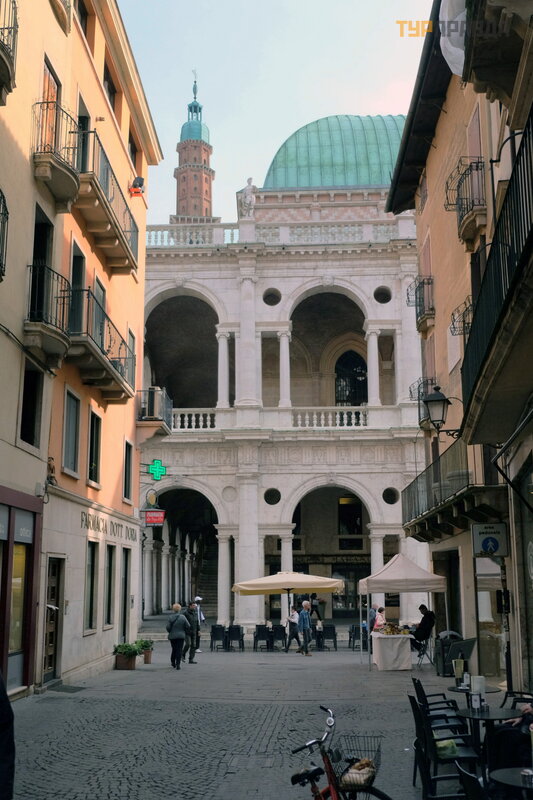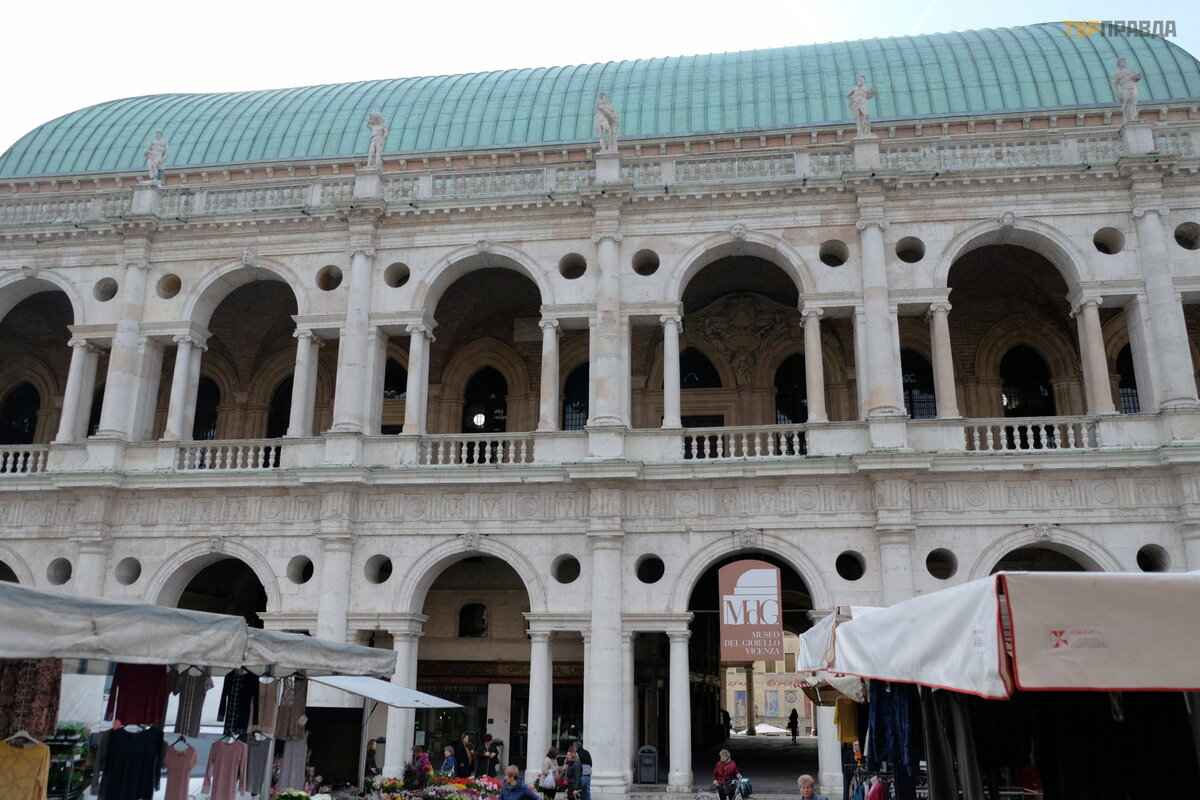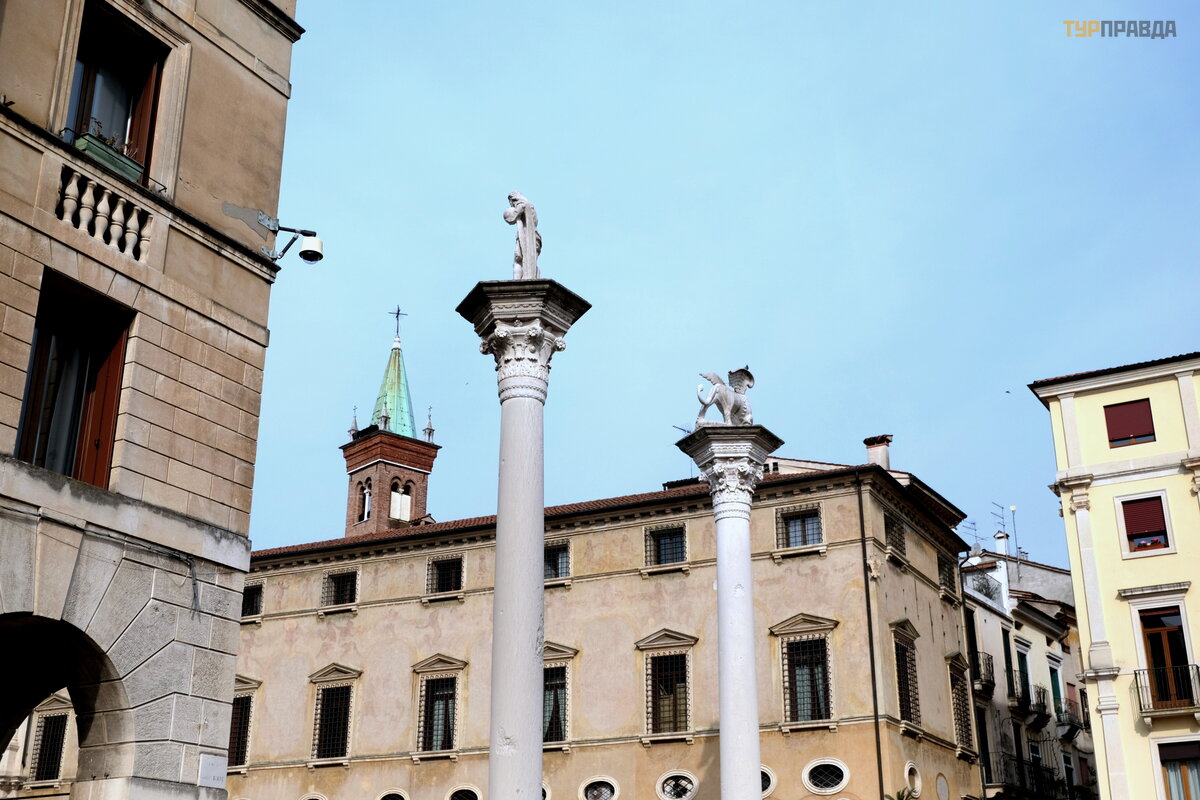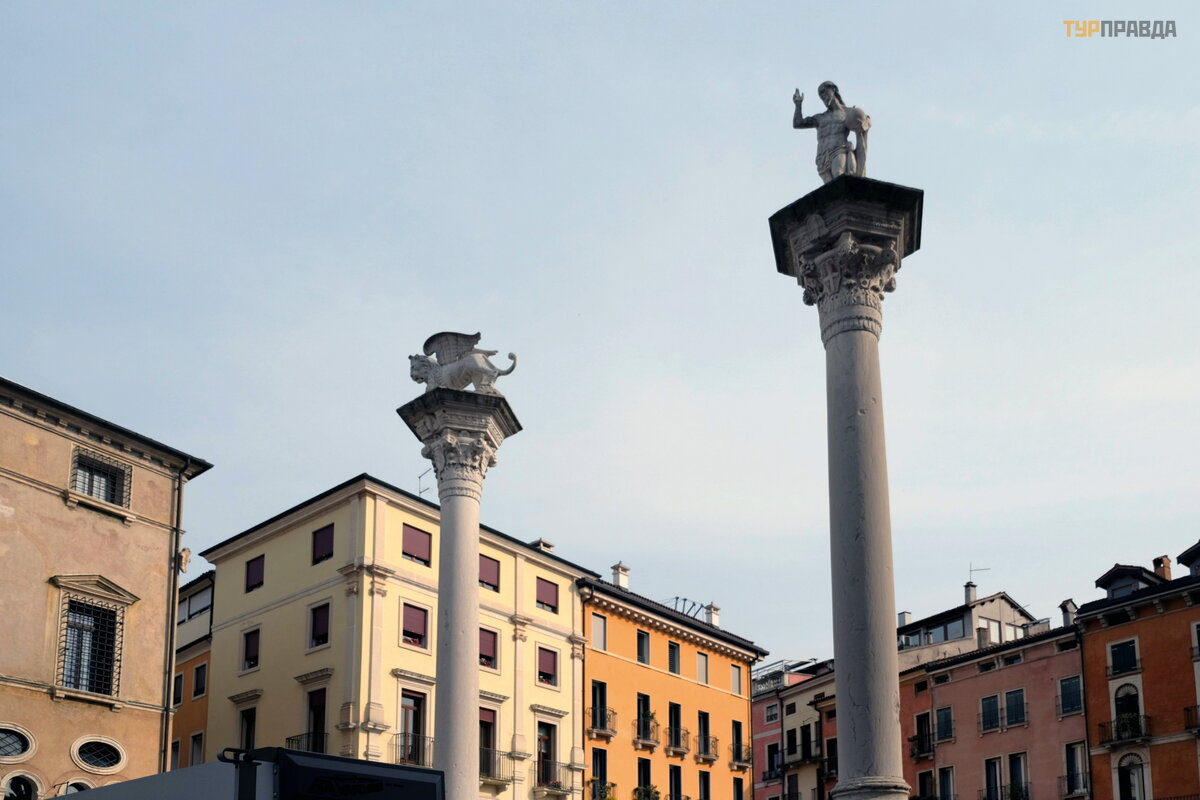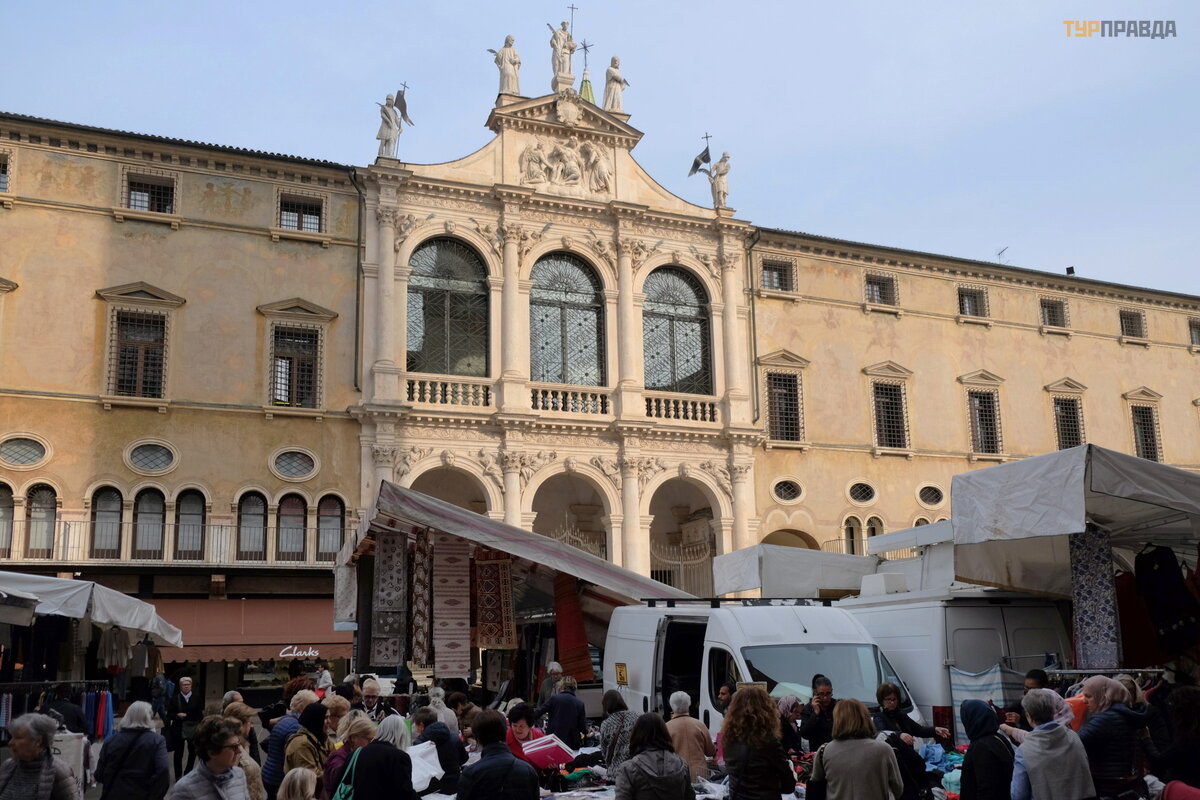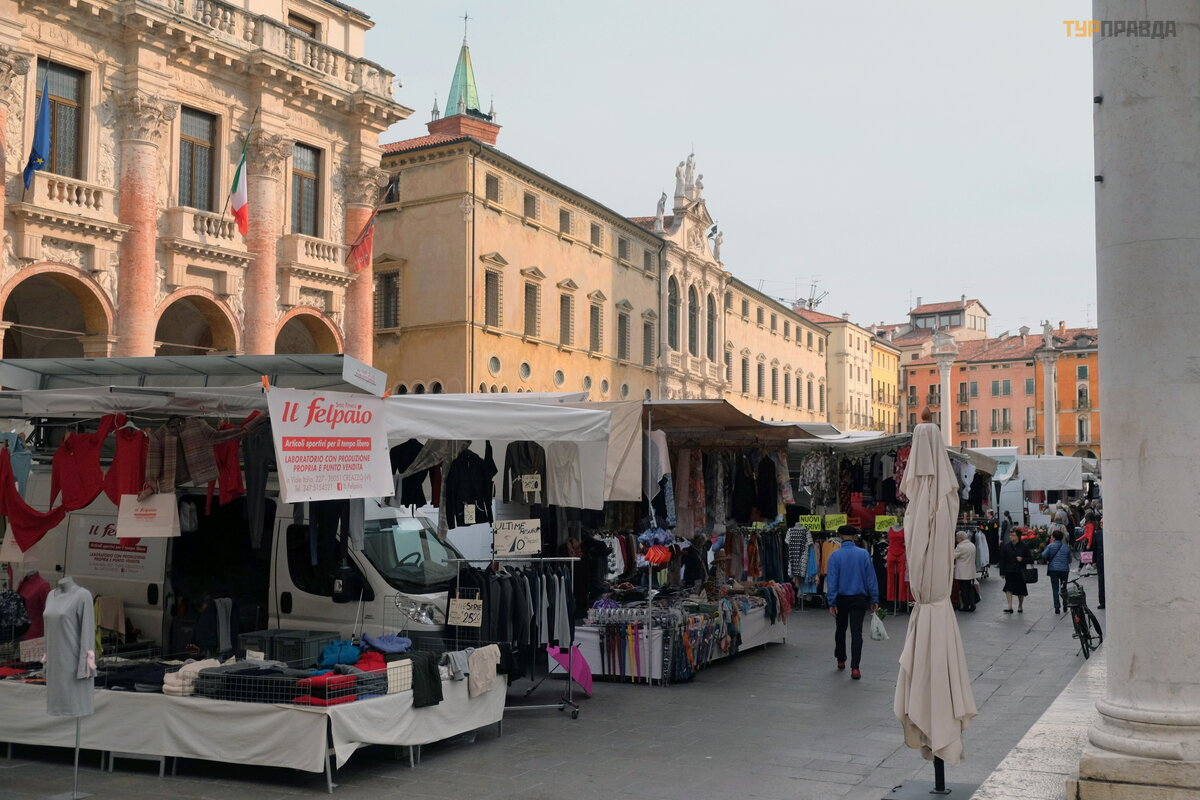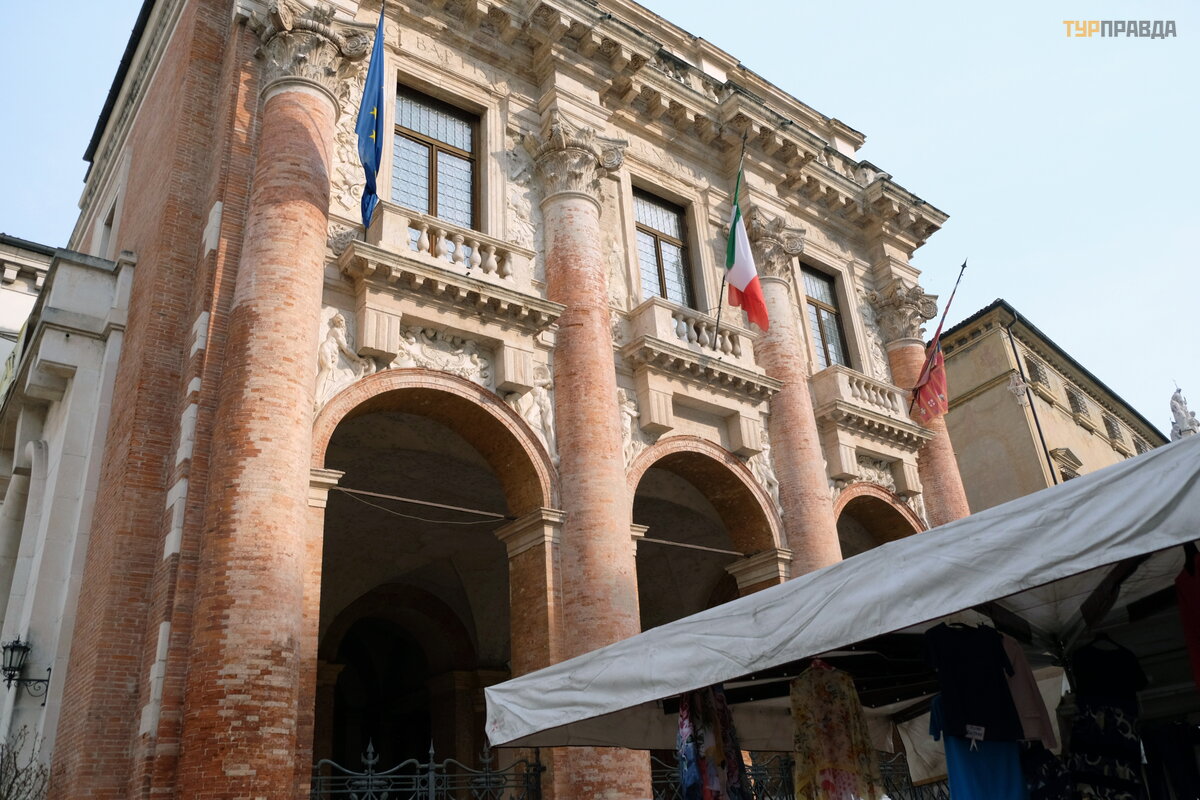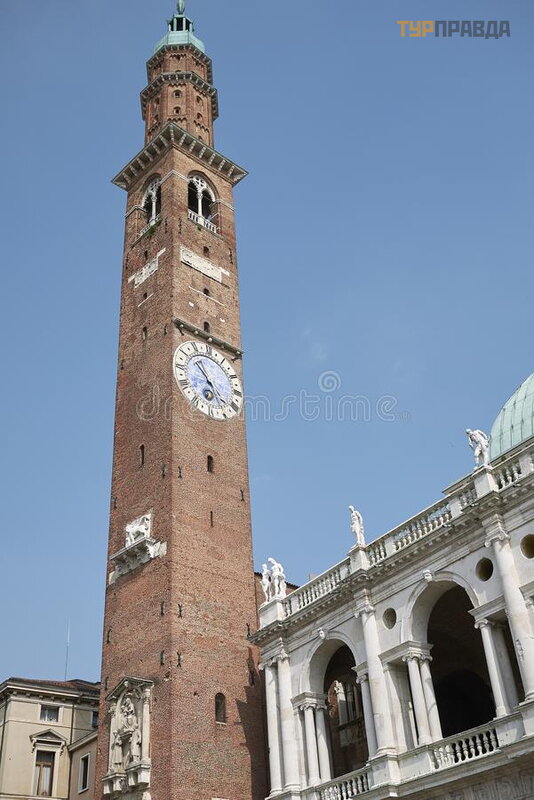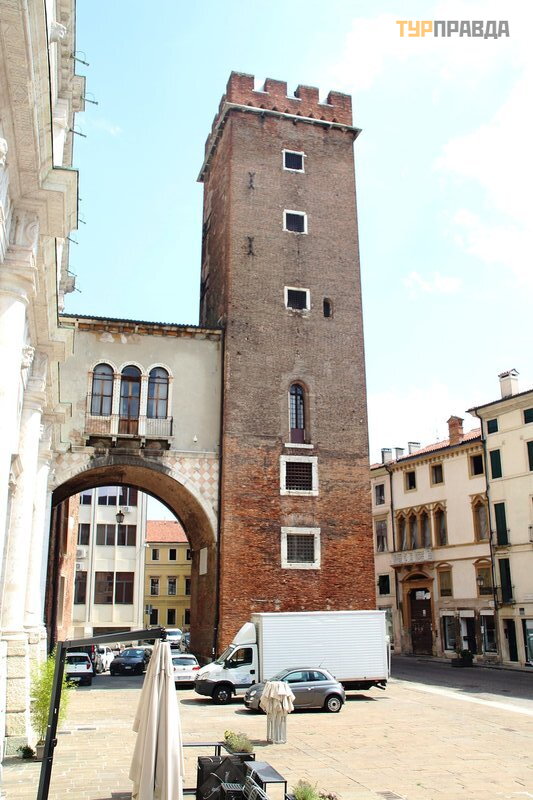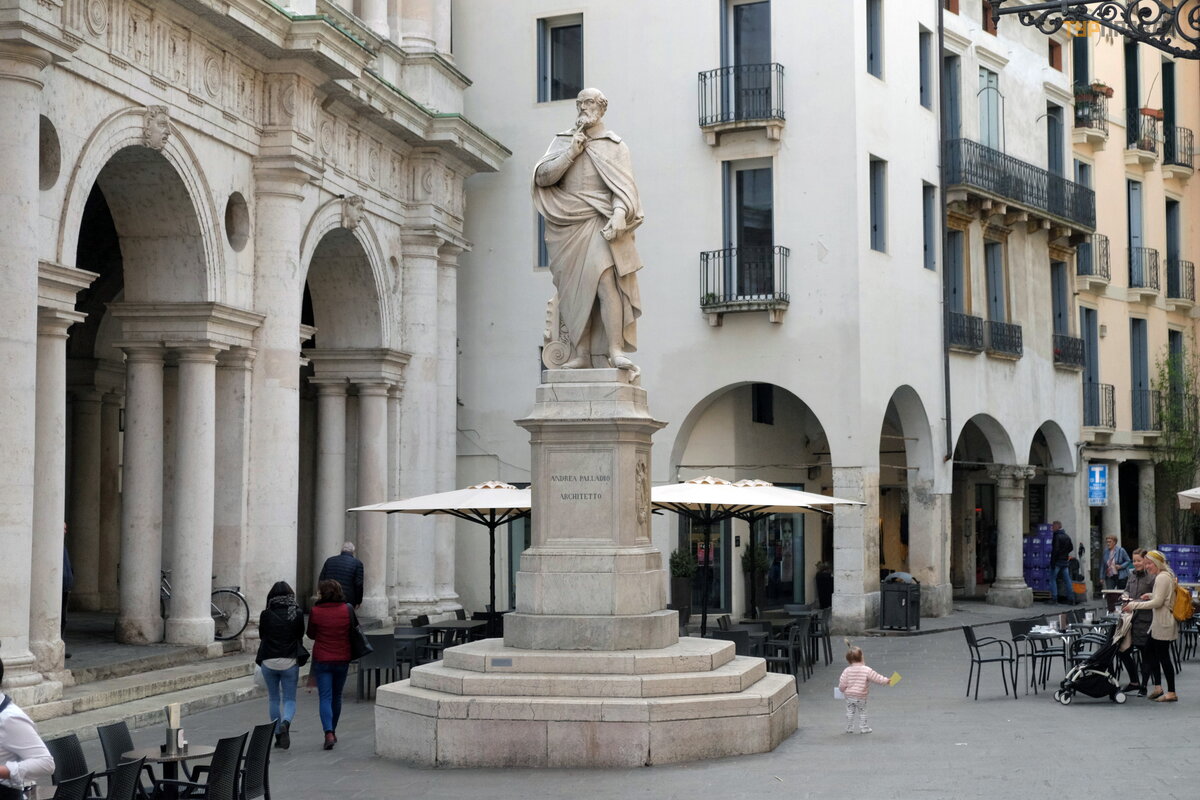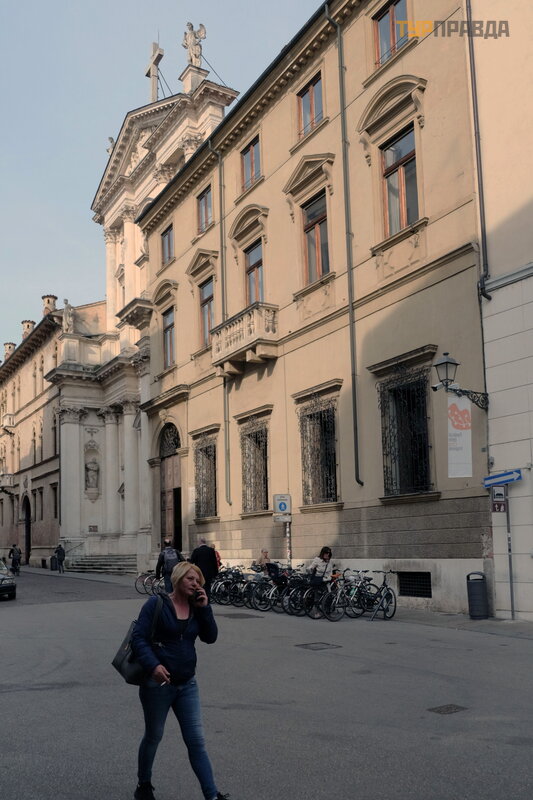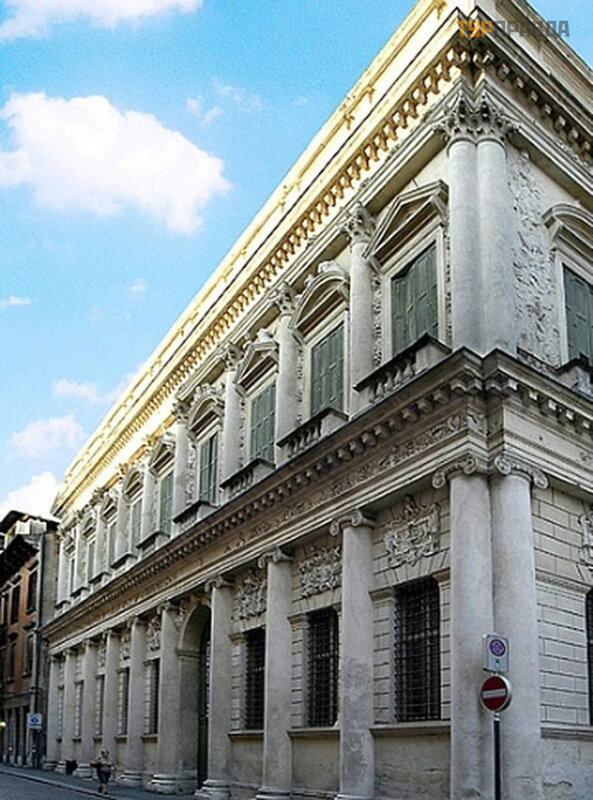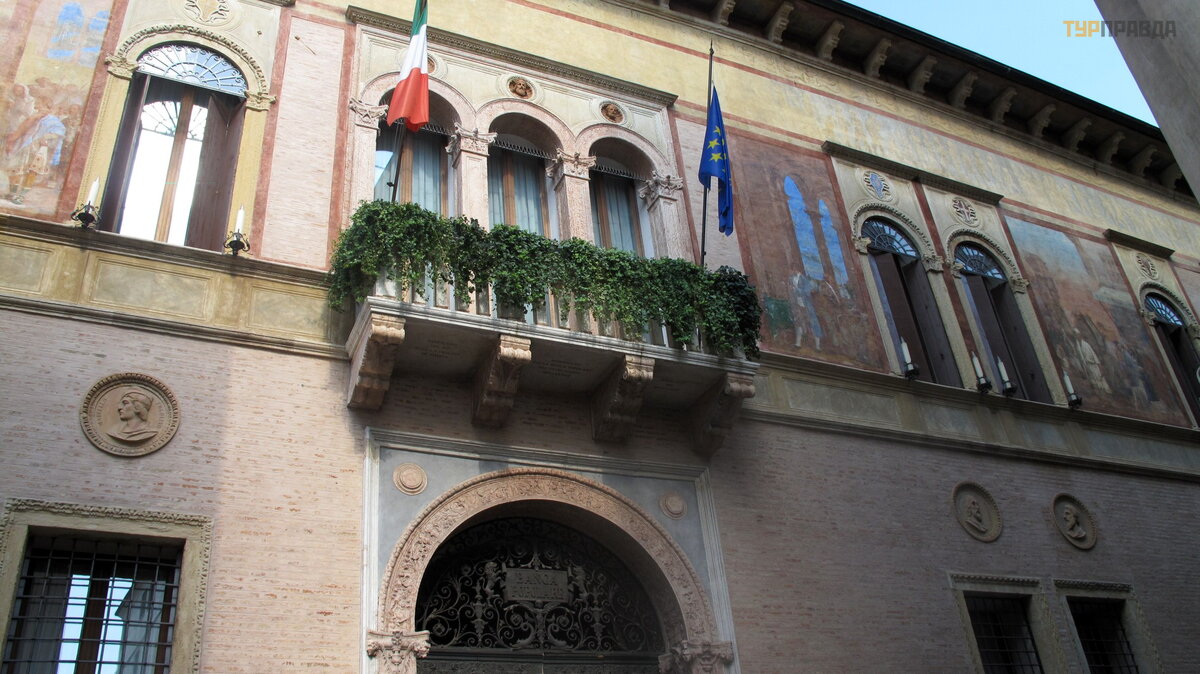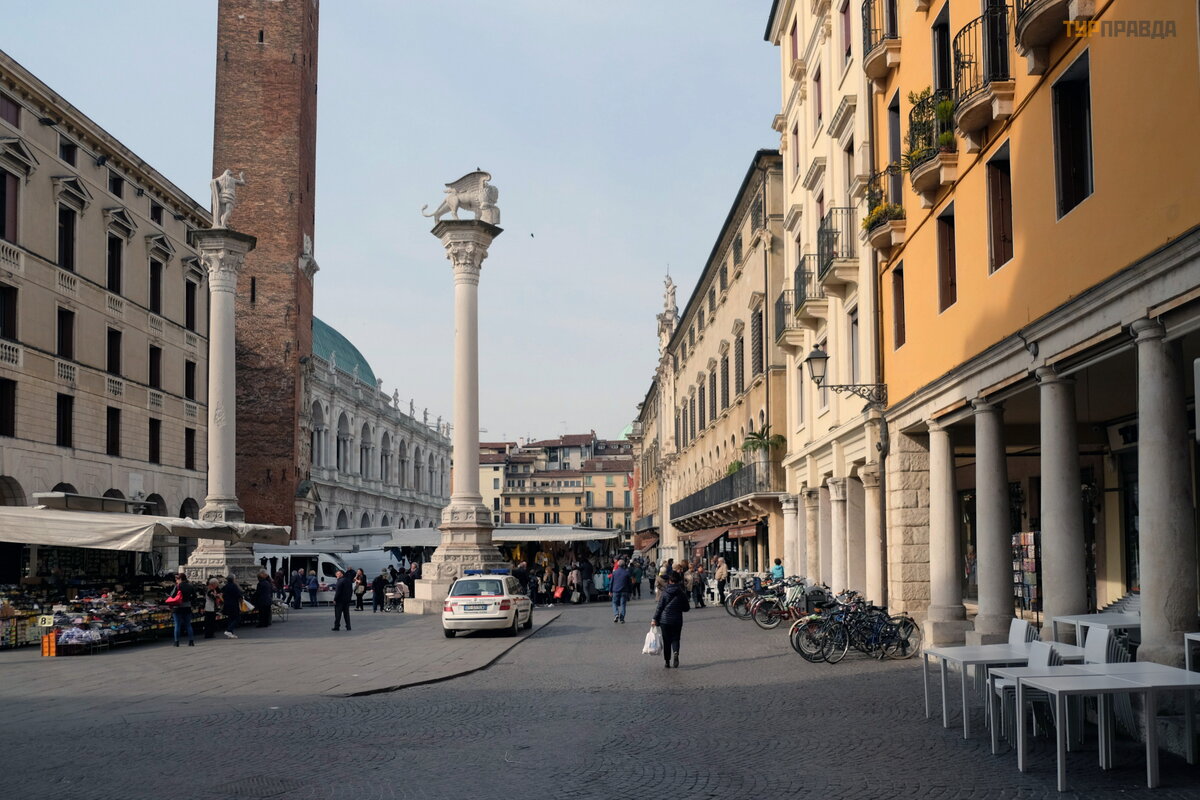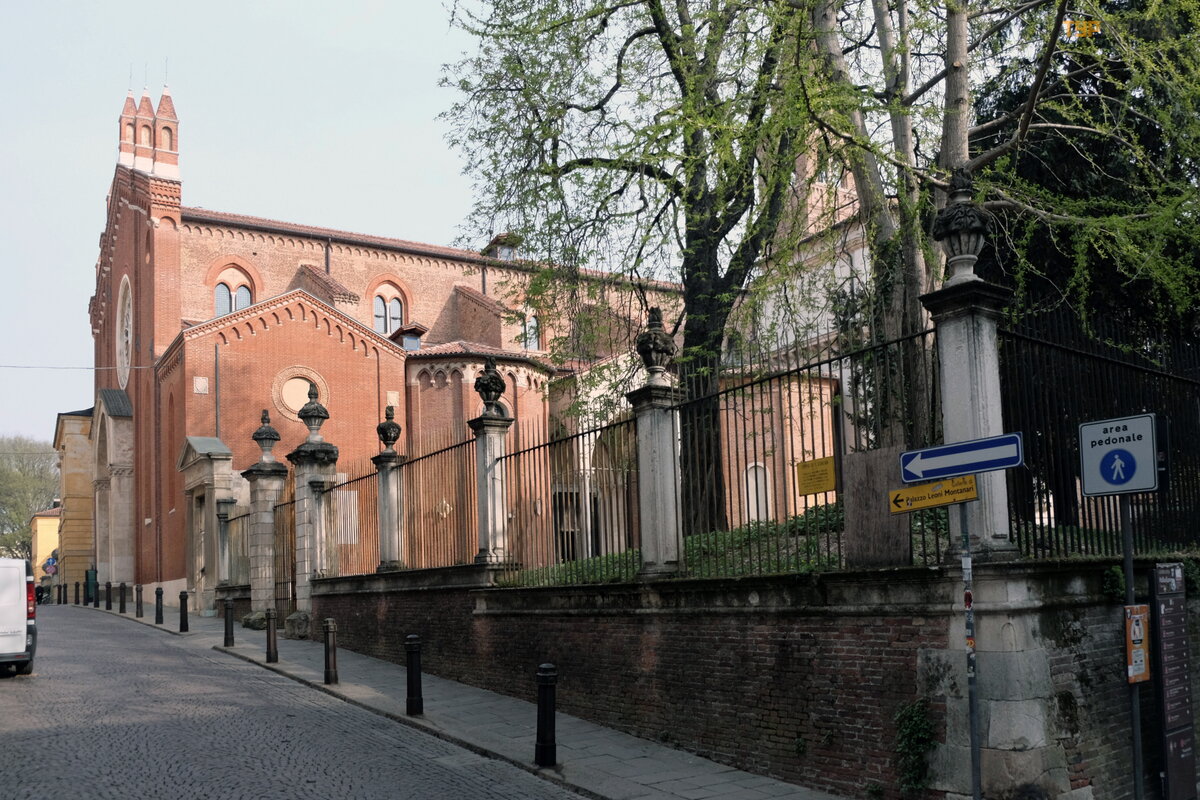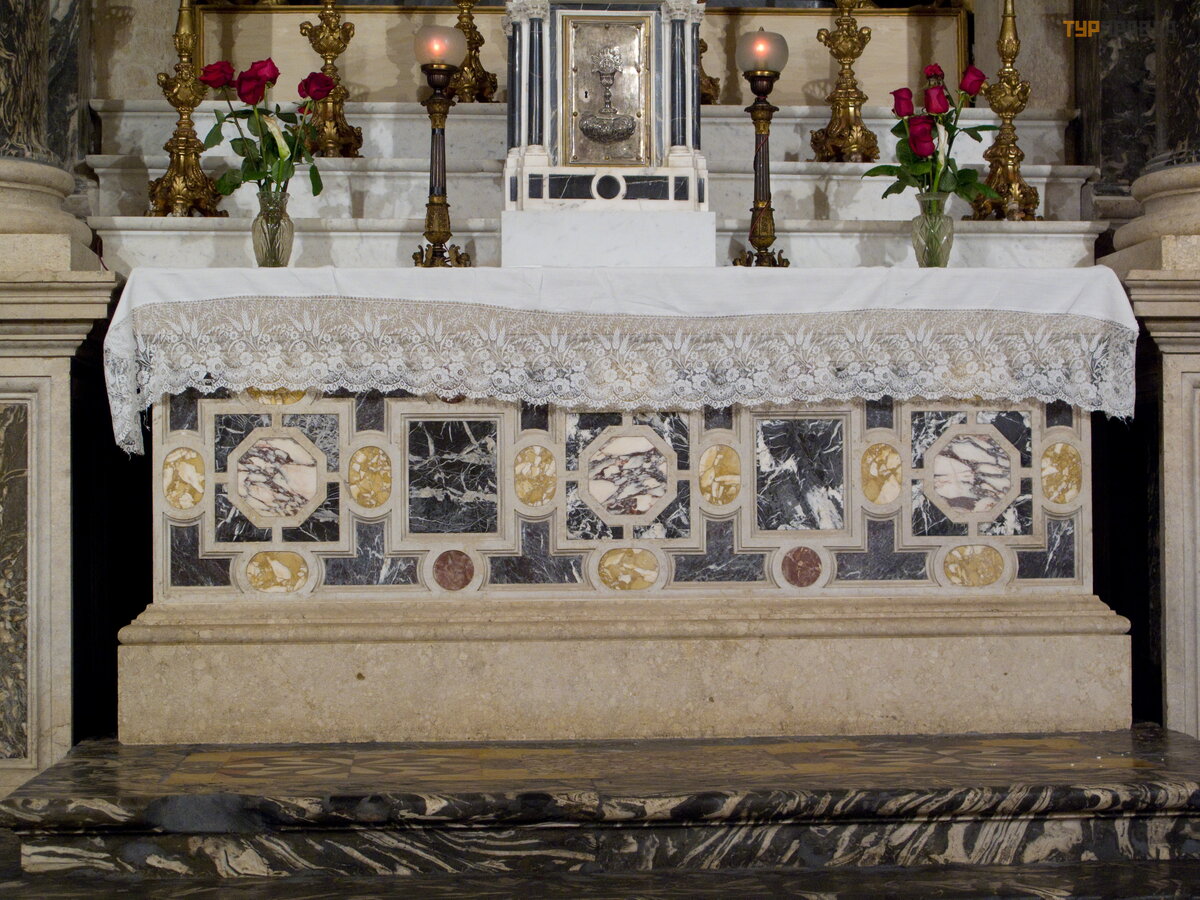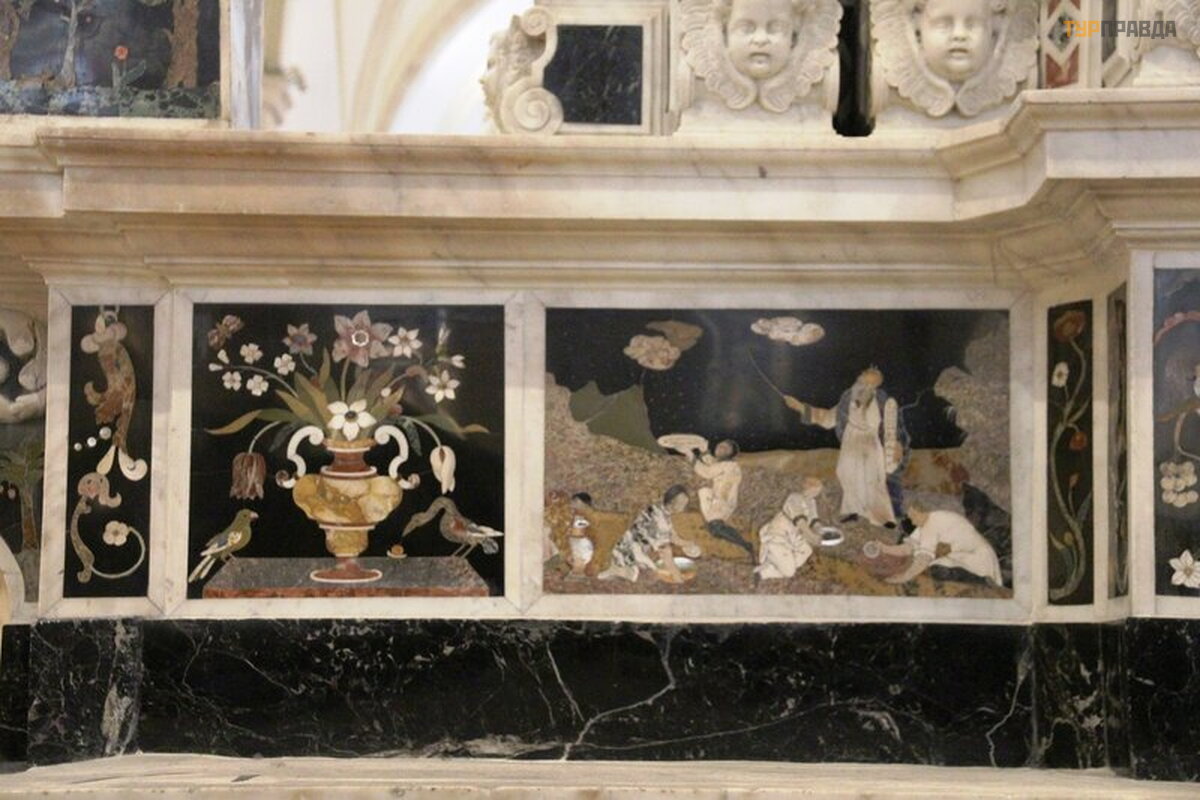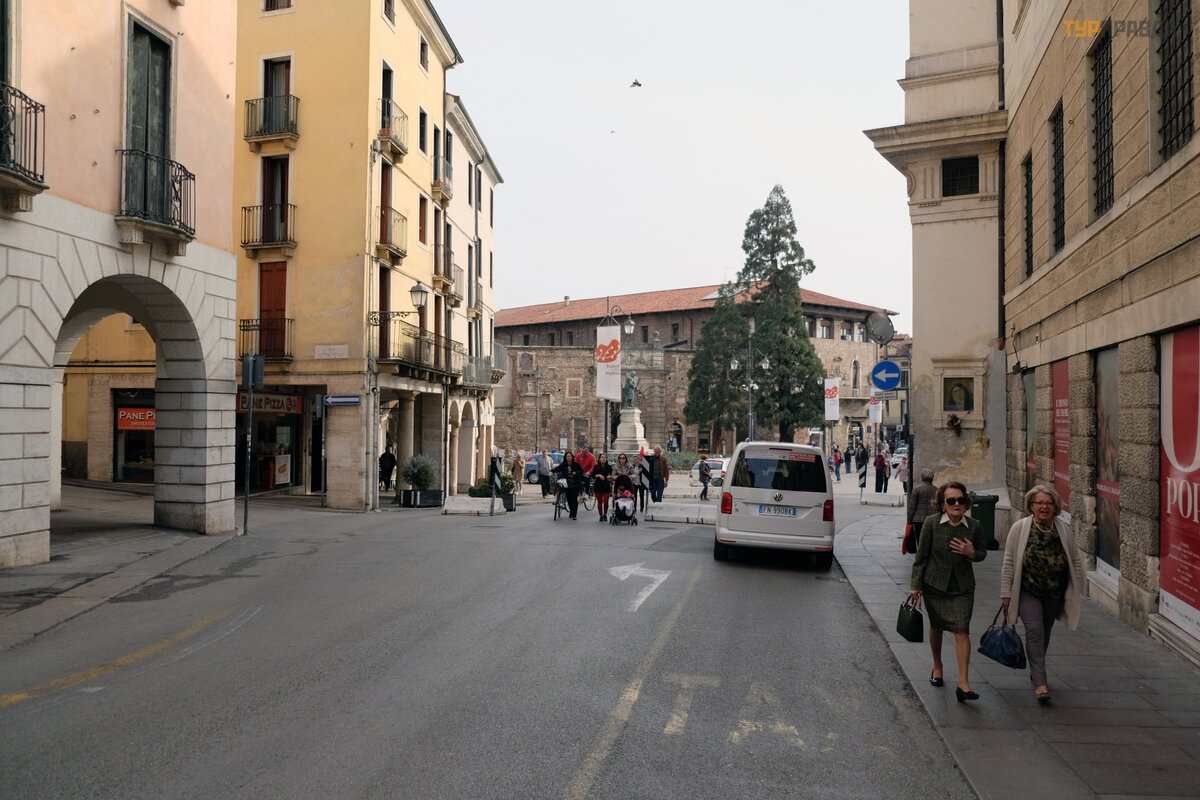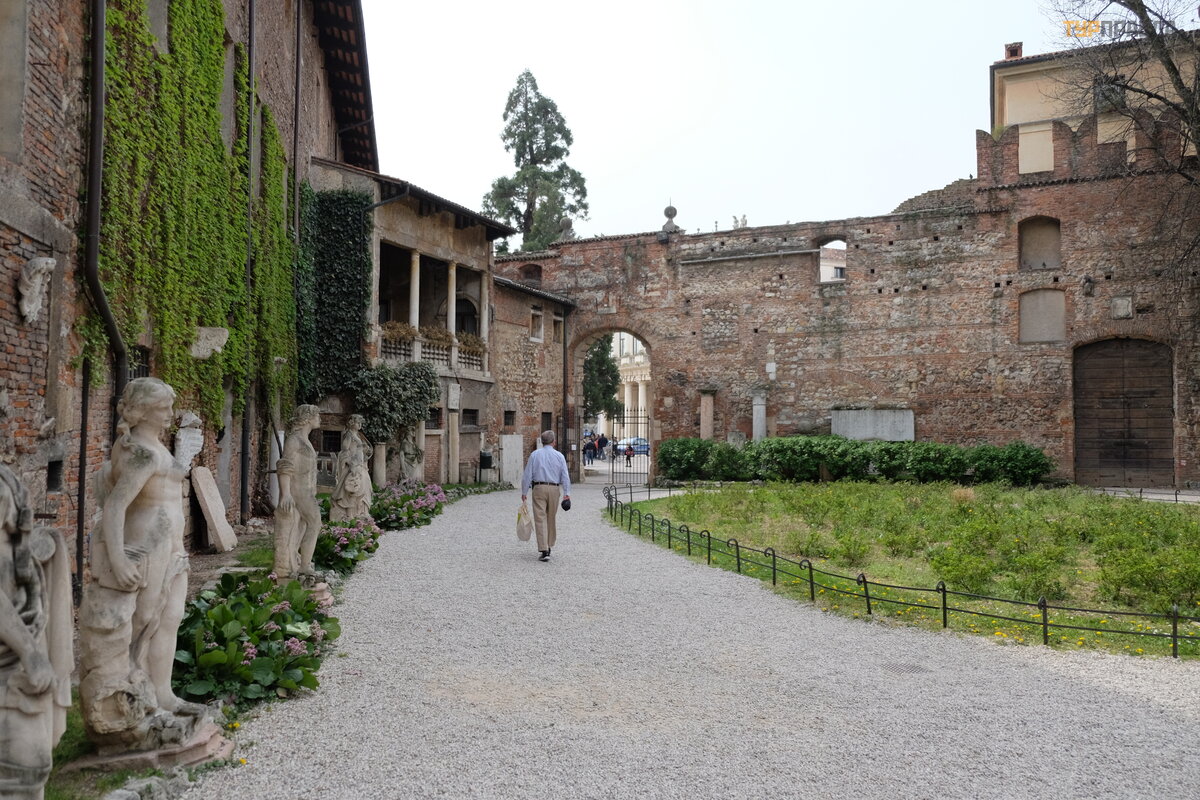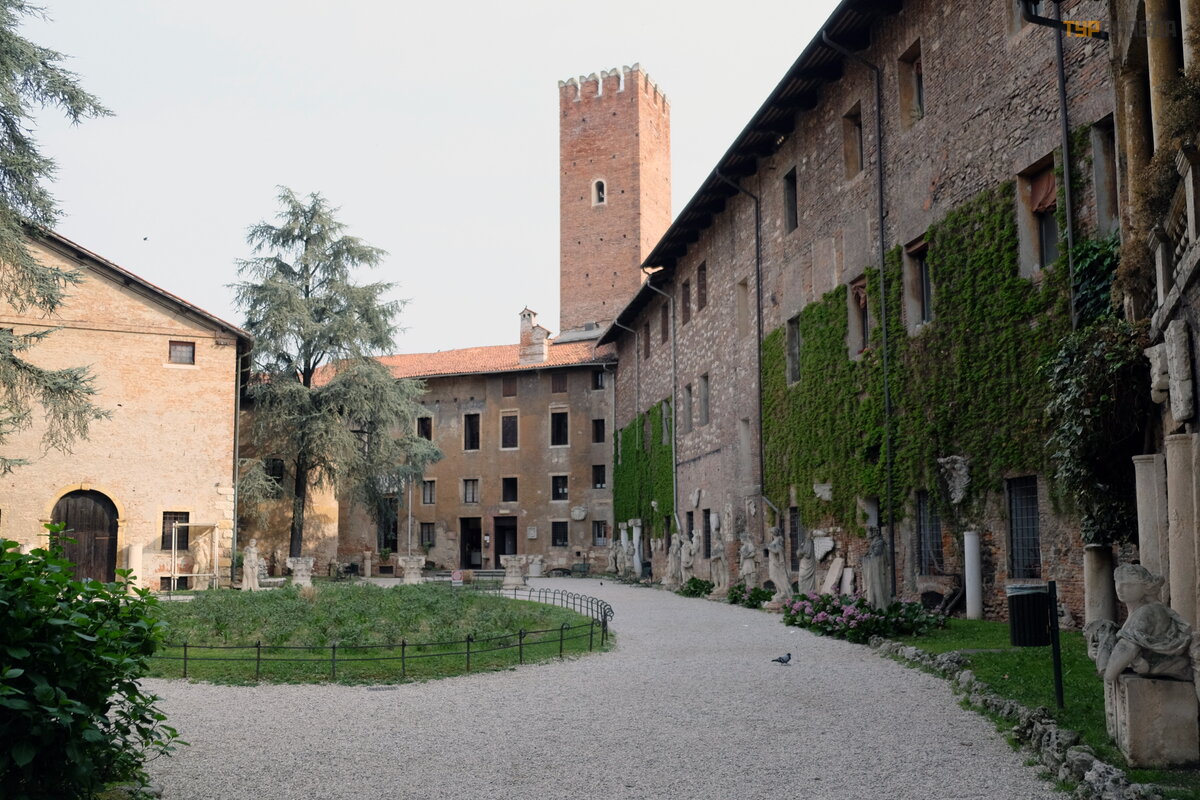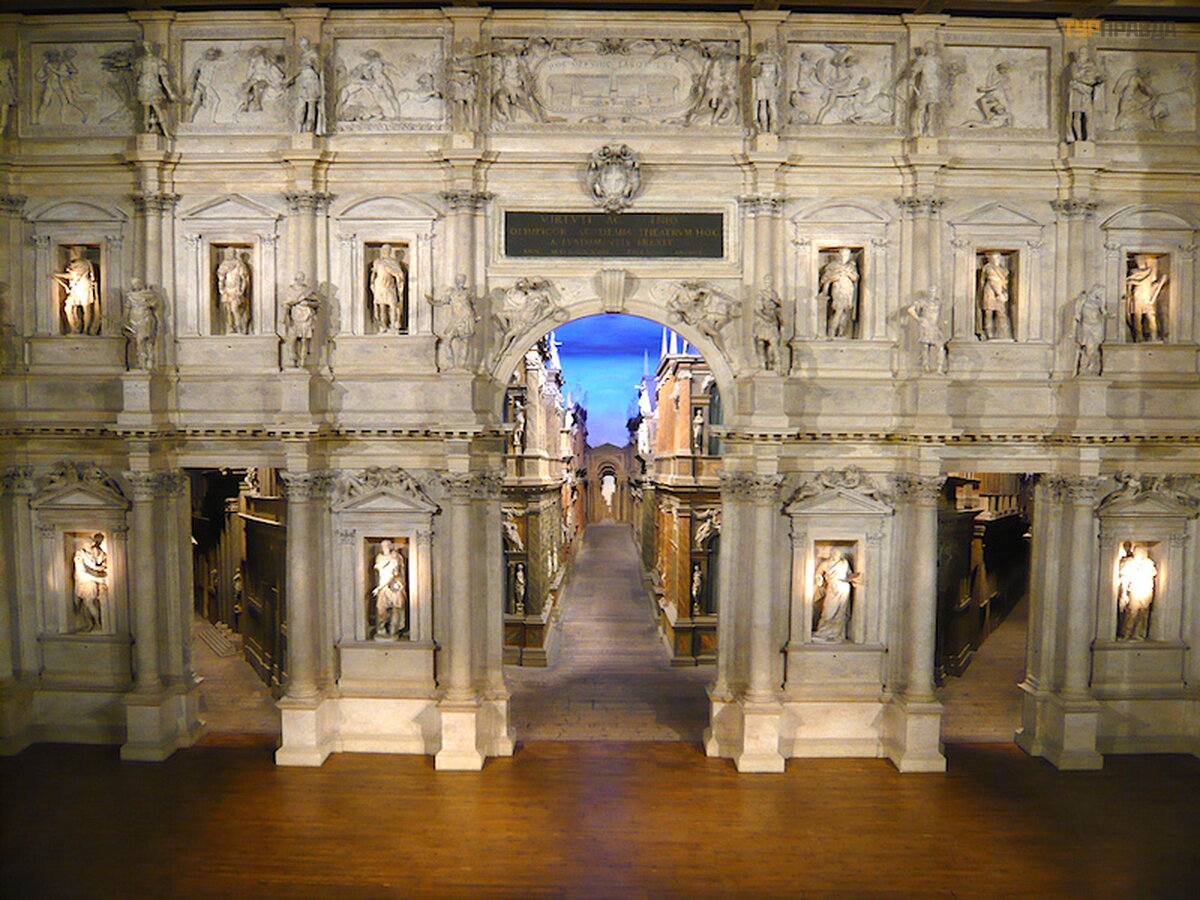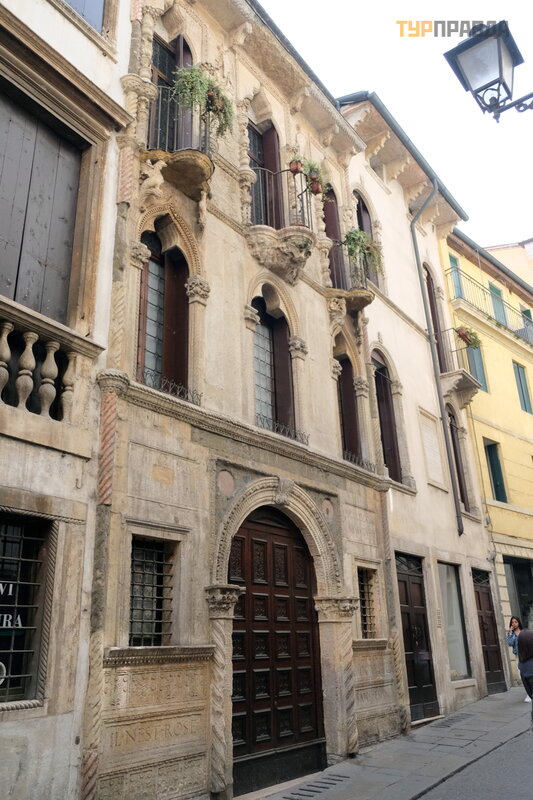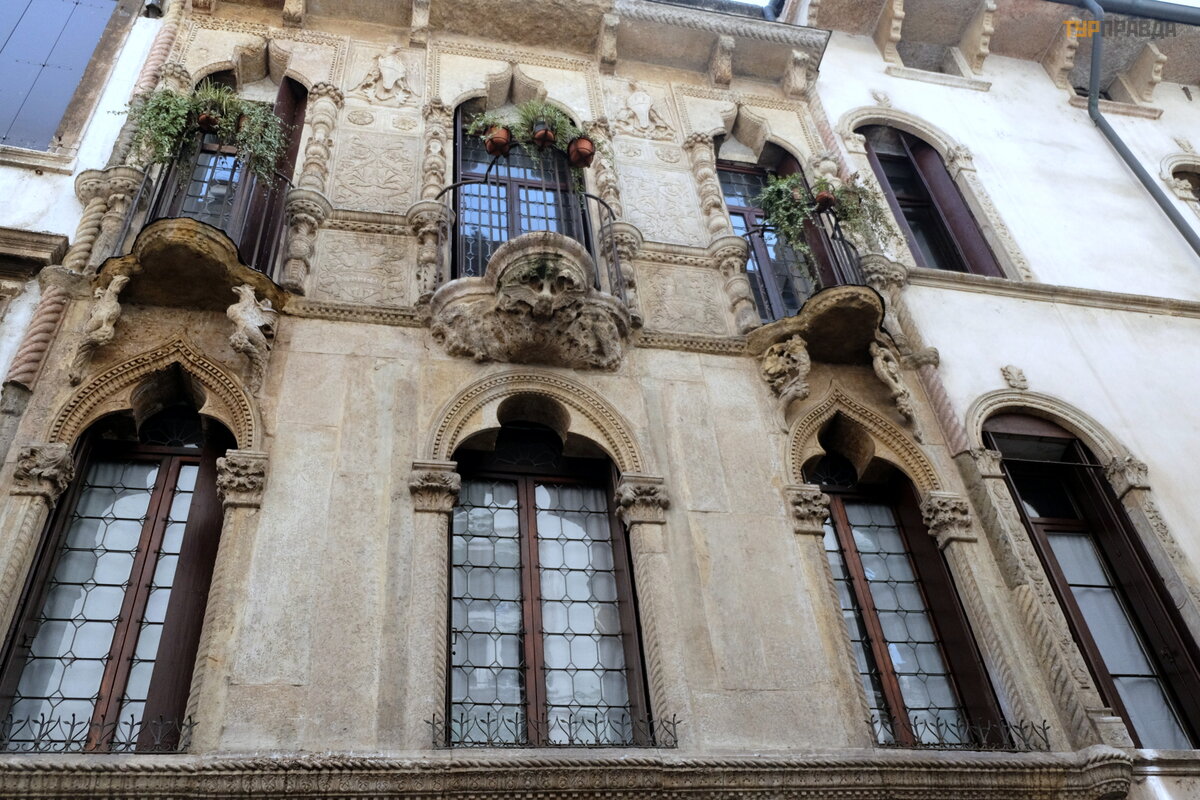Spring trip to Italy. Part 5. Vicenza

A spring trip to Italy. Part 1. Trento >>>
A spring trip to Italy. Part 2. Mantova >>>
A spring trip to Italy. Part 3. Brescia >>>
A spring trip to Italy. Part 4. Treviso >>>
The next stop on our journey was two cities - Vicenza and Padua. We have already been to Padua once, so we decided to go straight from Mestre to Vicenza, and on the way back to visit Padua again, because the distance between these two cities is small.
It takes one hour to get from Mestre to Vicenza, the price is about 6 euros.
Vicenza is considered the city of Palladio - Andrea di Pietro della Gondola (1508-1580). The architect, who took his nickname in honor of the Greek goddess Athena (Pallas), when all of Italy was still enjoying the art of the Renaissance, buildings in the Greek style were being built in Vicenza with might and main.
With porticos and columns of classical orders: regular, austere, charmingly beautiful in their purity, laconic beauty.
In Venice, only two buildings by Palladio are the churches of San Giorgio Maggiore and Il Redentore on the island of Giudecca. But in the provincial Vicenza, many buildings have been preserved.
We arrived in Vicenza at 9 o'clock. From the railway station of Vicenza to the sights of the city, the road leads through the Castello gate - Torrione di Porta Castello (XI-XV centuries). The gates (not only these, but several more in different parts of the city), of course, remained from the city's defensive structures. And this tower is the only thing left of the castle that once existed here before the construction of the castle walls began. Hence the name.
We rushed to the Salvi Garden, it was created and opened in 1592
We looked at the Loggia of Valmarana,
designed either by Palladio himself or in his workshop, is included in the UNESCO World Heritage List along with other creations of Andrea Palladio (although it has not been established whether Palladio himself created it or his students).
The next attraction on the way to the city center is the Church of St. Marcela (aka Filippini, after the name of the San Filippo Neri urban area) - Parrocchia di San Marcello detta dei Filippini (XVII-XIX centuries).
Let's go to Piazza Castello.
On one of its sides stands a monument to Garibaldi. Next to it is the Palazzo Thiene Bonin Longare, designed by Palladio and built (with major revisions) by Vincenzo Scamozzi. On the other side of the square stands another palace designed by Palladio and completed by Scamozzi - the Palazzo Porto Breganze. 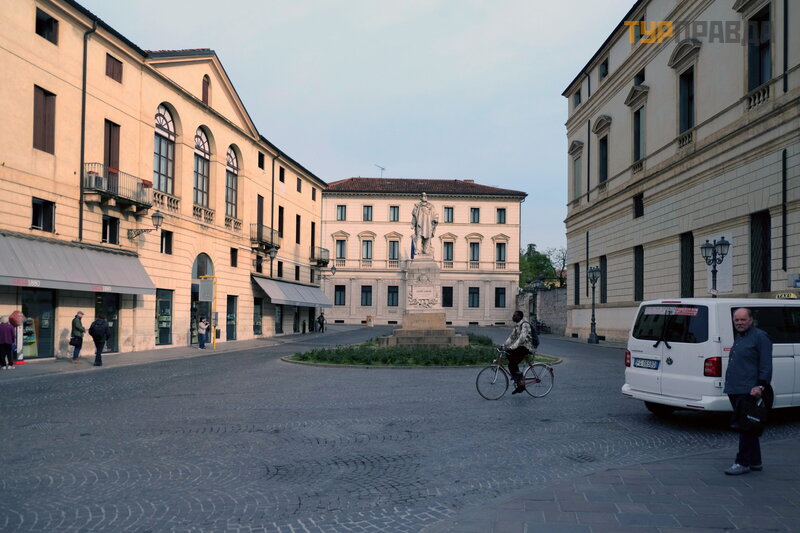
Next we go to the cathedral.
Here is the central faç ade:
Cathedral of Vicenza Santa Maria Annuncata is a strange long brick building with a separate dome and a white stone facade.
During World War II, the cathedral was badly damaged by Anglo-American bombardment, which destroyed the dome, a significant part of the nave and severely damaged the facade and south chapels. The frescoes that covered the interior walls were irretrievably lost.
The cathedral was built in 1430, and it acquired a facade in 1467. The dome of the cathedral was designed by Palladio in 1558.
Even later, according to the project of Lorenzo da Bologna, the apse of the temple was built.
Inside the cathedral there are some interesting paintings by Francesco Maffei, Lorenzo Veneziano and Bartolomeo Montagni.
Next to the cathedral is the chapel of Oratorio del Confalone, built in 1596 by Giovanni Battista Albanese, who considered himself a follower of Palladio.
Way to the main square of the historic center of Vicenza - Piazza dei Signori:
The green roof of the Palladian Basilica has already appeared:
This is the first project of Palladio in Vicenza - the restoration of the Gothic palace Palazzo della Ragione that existed on this site. At the end of the XV century. the southwestern corner of the palace collapsed. In the next half century, many eminent architects did not dare to restore the building. Finally, in 1546, a young, little-known architect took over. Palladio added Serliana to the Gothic palace - a loggia and a portico with semicircular arcades. The loggia is almost the first project in which the architectural element "Venetian window" was used, later also called Palladian. The decoration of the facade was completed after the death of Palladio. Since 2007, Basilica Palladiana has undergone extensive restoration. Now the building serves as an exhibition and cultural center.
Unfortunately for me and to the joy of my wife, on the main square of the city - Piazza dei Signori - there were numerous merchants, because it was an exit clothing market.
Therefore, the whole beautiful view of the square was partially spoiled for me.
The square is decorated with two columns, the first of which is with the lion of St. The stamp was installed in 1464, and the second with a statue of Christ appeared on the square in 1640.
On the same side with the Loggia is built in the XV-XVII centuries. Palace of Monte di Pieta. The building of the palace consists of two wings, between which is the church of St. Vincenzo, one of the heavenly patrons of the city, now the building is occupied by the Cultural Foundation. The baroque faç ade of the church of San Vincenzo dates from the early 17th century. At the same time, statues created by the sculptor Giovanni Batista were installed on the facade.
But the stalls spoil the whole thing. Here is a photo from the internet
what the square looks like without vendors:
Opposite the Basilica stands another masterpiece of Palladio - the Loggia del Capitanio (that is, the Venetian military governor). The loggia began to be built in 1565 and finished in 1572, immediately after the Battle of Lepante, which had taken place a year earlier, where the Turkish fleet had been defeated. In appearance, the Loggia del Capitano looks like a Roman triumphal arch, which is decorated with images of trophies captured from the Turks.
To complete the picture, I give a photo from the Internet without traders:
The tallest building on the square is the 82-meter Bissaro Tower.
The first tower on this site was built in 1174 by order of the Bissarro family,
but then it was much lower. At the beginning of the XIII century. the tower was bought by the city commune and used it as the residence of the podest. In 1945, the Allied bombers damaged the tower. A full-fledged restoration of the tower ended only in the first decade of our century. During the restoration, the unique tower clock was restored. The dial again acquired a blue, heavenly color, and the bell and the sphere showing the phases of the moon were also returned to their place.
On the other side of the Paladiano Basilica there is another medieval tower - del Girone Torre Del Tormento E Arco Degli Zavattieri (XII century), since it was once surrounded by water, or del Tormento (because it was used as a prison ). It is connected to the palace by the Zawatteri Arch.
Next to Piazza Signori is the Church of St. Maria in Foro Chiesa di Santa Maria in Foro (detta "dei Servi", XV-XVI centuries).
The portal of the church was made in the workshop of Palladio and is considered one of his earliest works.
Nearby is the tiny Piazzetta Palladio, where a monument to the architect is erected.
While my wife was hanging out in the square, choosing what to buy for herself and her granddaughter, I briefly looked around other sights of the city.
Church of St. Gaetana Chiesa di San Gaetano (XVIII century):
Palazzo Barbaran, built between 1570 and 1575 for the local aristocrat Montano Barbarano. This is the only large palace in Vicenza, entirely built by Palladio himself:
And this is the Palazza Thiene, built in 1550-1551, the author of the project in 1542 was Giulio Romano,
however, already during construction, in 1544, when Romano died, it was reworked by Andrea Palladio:
Back to Piazza della Signoria:
The trade is finally over, the gifts are bought and we are going towards the ancient gothic church of the Holy Crown:
Church of St. Crowns (Chiesa di Santa Corona) was founded in 1261 specifically to store a spike from the crown of thorns of Christ, which was presented to the local bishop by Louis IX. Such an important relic allowed the church to become the center of the religious life of Vicenza and eventually turn into a large monastic complex.
Entrance to the church is paid - 3 euros.
For those who have planned a detailed sightseeing tour of Vicenza, it is advantageous to buy a Museum Card (MUSEUM CARD) for4 museums for 15 euros or 20 euros for 8 days with all visits.
The church houses a decent collection of works of art, including Veronese's Adoration of the Magi and Bellini's Baptism of Christ.
In the 15th century, the church was rebuilt and expanded, and a rich interior with an altar decorated with marble, coral and mother-of-pearl inlays was decorated with original chapels. Palladio himself was buried in the church in a family grave, but in the 19th century it was decided to solemnly rebury his skull with the largest bones (somehow singled out among other remains) in the Monumental Cemetery of Vicenza,
erected a monument and made a grave for their famous citizen.
The altarpiece dates from 1667-1669, the instructions are made with semi-precious stones, by the Florentine master Corbarelli, who in 1670-1671. also built a temple over the altar. The grandiose complex stands on three steps, decorated with inlays, geometric and floral motifs.
After examining the church, we move on to another famous building - the Olympio Theater.
This is the theater courtyard:
Behind the theater you can see the Torre Coxina tower, which appeared here in the 13th century.
The theater stands on the site of the ancient fortress Palazzo del Territorio. The theater was built in 1580-1585. and became the last masterpiece of Palladio. True, Palladio's son, Silla, was already finishing the theater, and then the architect Vincenzo Scamozzi.
A ticket to the theater is quite expensive - 11 euros, because in fact, apart from the auditorium, nothing is included in this price. The theater still hosts performances. In winter, the theater does not work, because they observe the regime of a certain humidity of the building. There is no heating or ventilation.
Created for the first performance of Oedipus Rex in 1585, they have remained unchanged to this day. Medieval streets (the city of Thebes) stretching into the distance are visible through the central arch and openings. It is hard to believe that the length of the central street is only 12 m. The illusion of length is created by the rising "pavement", the descending "sky" and the shrinking "buildings".
For full effect, during the performance, children dressed as adults, or midgets, are in the background.
The theater is located on piazza Matteotti, where another masterpiece of Palladio stands - Palazzo Chiericati. In 1550, Palladio began the project of the palace commissioned by Count Girolamo Chiericati. At that time, the current Piazza Matteotti was an island among the city's rivers, so Palladio designed Palazzo Chiericati on a small hill. As you can see, the entire first floor is occupied by a loggia. There are also side balconies on the second floor. Now here is the City Museum, which contains a very worthy collection of paintings. In particular, here you can see several paintings by Montagna, which is rare in other museums, and even rarer Buonconsiglio, whose "Pieta" is considered a recognized masterpiece of the Italian Renaissance.
True, for us, due to lack of time, all this remained “behind the scenes”.
Here we took a short break for lunch and went to the area of Piazza Castelloc "Path of the Four Bridges", which overlooks the houses washed by the slow waters of the Retrone River. This part of the city is radically different from the "Palladian" face of Vicenza
St. Michael's Bridge was built in 1262. Initially, this bridge was wooden, and in 1422 it was rebuilt in stone. The bridge took its final form in 1621. Usually this bridge appears in the most beautiful photos from Vicenza.
And this is St. Paul's Bridge and an unusual monument on the bridge. . .
. . . to the writer Neri Pozza (1912-1988) - the author of historical research and monographs about the artists of the late Renaissance: Giorgione, Veronese, Titian.
Then we went to look for the House of Pythaget.
Once in the 15th century, it belonged to the local navigator Antonio Pigafetta, a member of the first expedition of Magellan. At the Battle of Mactan, in which Magellan was killed, Antonio Pigafetta was wounded, but managed to survive, and under the command of the new captain Juan Sebastian, Elcano continued on his way back.
A. Pigafetta's diary "The Journey of Magellan" describes not only the detailed history of the voyage, the diary contains notes on flora, fauna, climate, and the customs of local residents.
This house is a rare example of the Gothic style, which has completely preserved its original appearance.
At this point, we have already turned to the station:
In the photo, you can see the Church of Santa Maria di Monte Berico on Mount Berico in the distance.
In general, we concluded that it was necessary to allocate a full day to Vicenza, because although the city is small in area, the number of UNESCO monuments is simply amazing, there are 23 Palladio buildings in the city alone! But there are also famous villas in the vicinity of the city: Villa Valmarana ai Nani (Villa of the Dwarfs), Villa La Rotonda, the architecture of which served as a prototype for hundreds of buildings around the world - from the White House in Washington to district houses of culture. And it is necessary to choose a day without traders in the squares.
